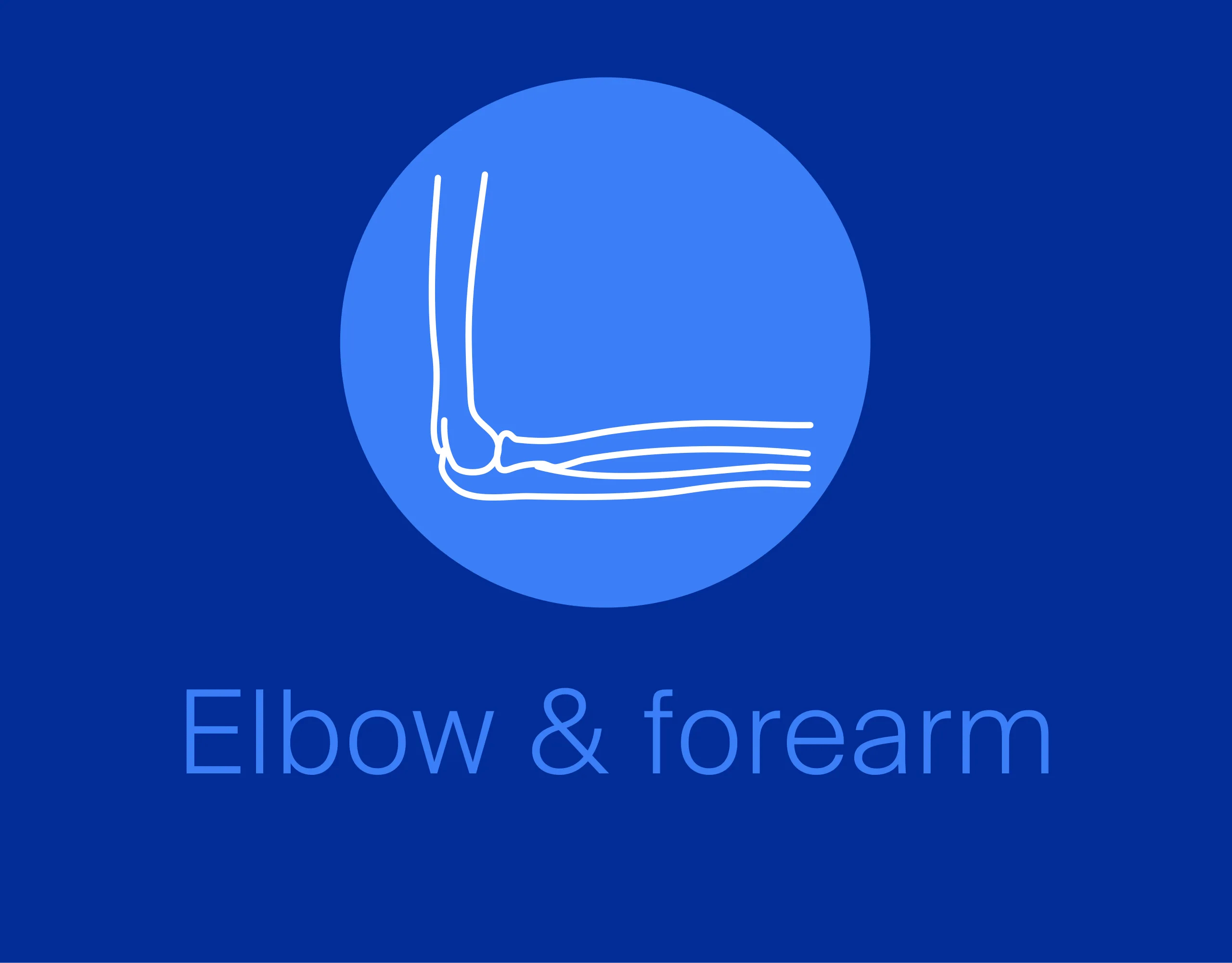ORIF - Headless screw and plate fixation
1. General considerations
Treatment principle
The coronal articular fracture segments are stabilized with headless compression screws and K-wires.
The articular reconstruction and medial column are then supported with a medial plate with or without extension.

Additional plating of the lateral column may be necessary when the fracture involves the lateral aspect of the trochlea or the lateral column.
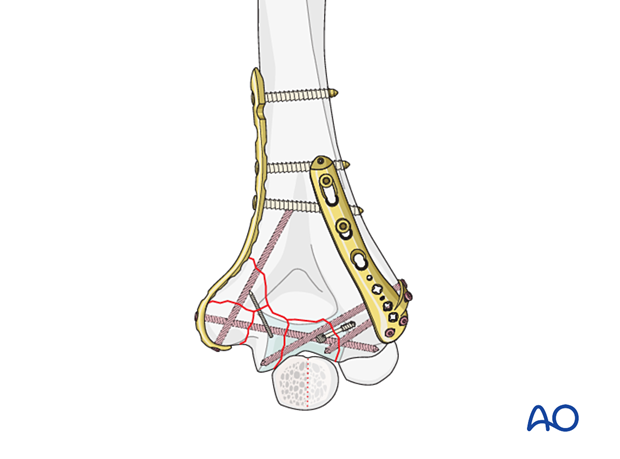
Triangle-of-stability concept
The mechanical properties of the distal humerus are based on a triangle of stability, comprising the medial and lateral columns and the articular block (see also the anatomical concepts).

Screw selection
In the shaft, 2.7 and 3.5 mm screws are most commonly used.
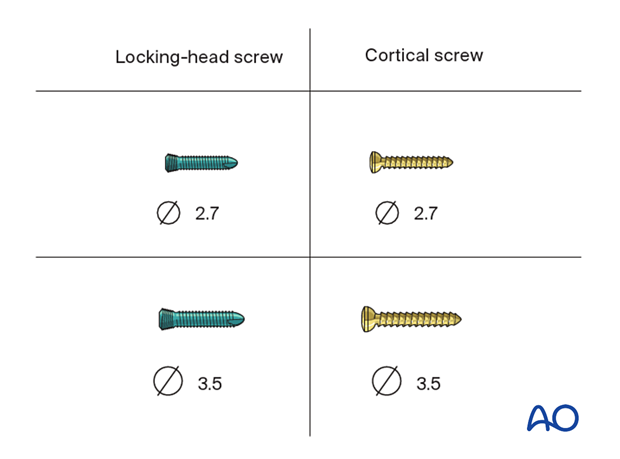
The articular screws are 2.7 mm metaphyseal and VA-LCP locking screws.
Articular screw dimensions
Headless compression screws are available as 2.4 and 3.0 mm screws. The size and number of headless compression screws used will depend on the complexity of the fracture to be fixed.
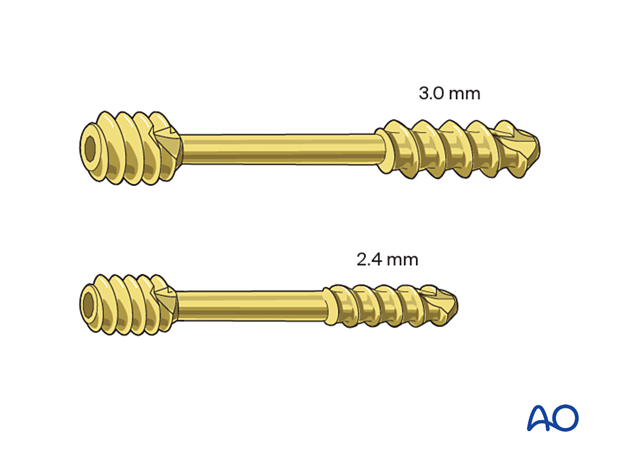
Note: ulnar nerve at risk
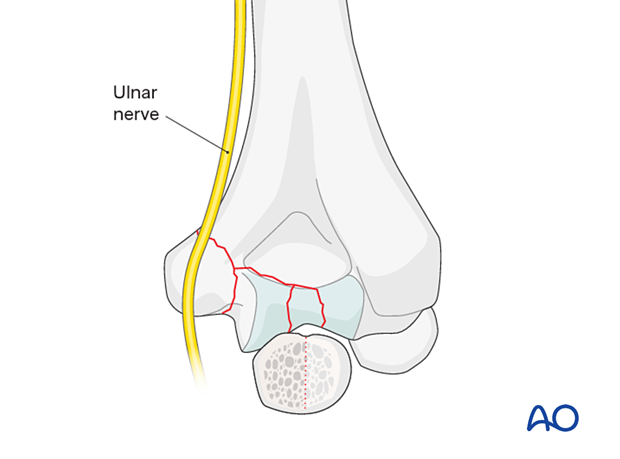
2. Patient preparation and approaches
Patient positioning
Depending on the surgical approach, the patient may be placed in the following positions:
Approaches
Due to the anterior and posterior involvement of the medial column and central articular segments, a posterior approach is indicated.
The triceps-split approach may provide sufficient visualization and exposure, but in most cases, an olecranon osteotomy (shown in this procedure) is necessary.
The posterior approach, using an osteotomy of the olecranon, provides excellent access (shown in this procedure). This is performed with the patient either in the prone or lateral decubitus position.
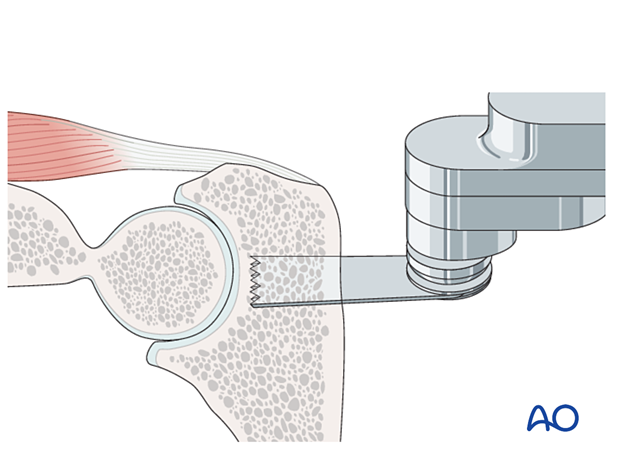
3. Fragment mobilization
Mobilization of impacted fragments
Disimpact the posterior trochlea using a fine elevator. Take care to preserve smaller articular fragments.
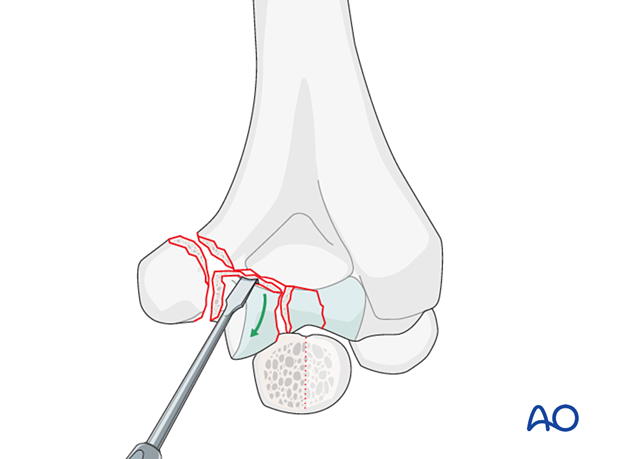
Clearing the fracture site
Clear the fracture of any hematoma, loose pieces of bone, or interposed tissue.
Inspect the joint surfaces to ensure complete identification of additional intraarticular fracture extensions.
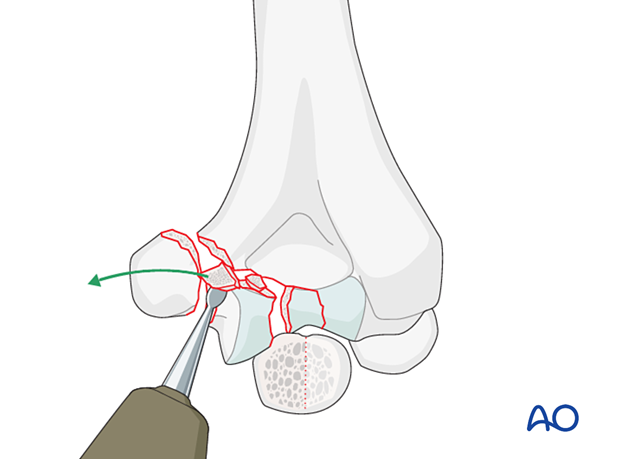
4. Fixation of the articular segment
Option: K-wire fixation of small fragments
If the fracture morphology allows, stabilize small fragments with a threaded or smooth K-wire. Cut the K-wire so as not to interfere with the other fragment reduction.
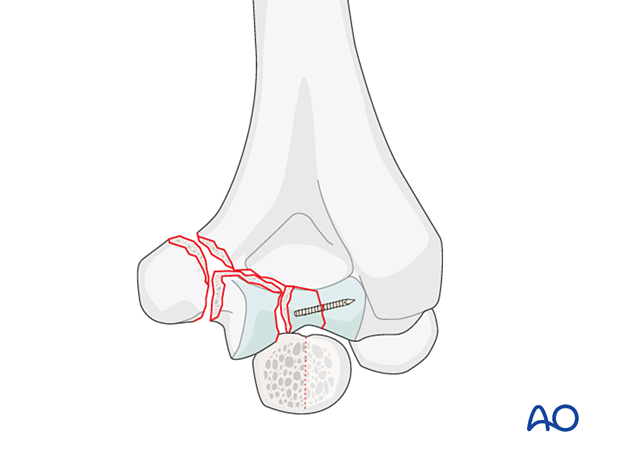
Provisional fixation of the articular segment
Provisionally stabilize the reduced fragments with smooth K-wires.
If necessary, check the reduction and provisional fixation with image intensification.

Fixation of articular fragments
Secure the coronal articular fragments with buried headless screws, small threaded K-wires, or absorbable pins.
The screw stabilization may be needed in several planes.
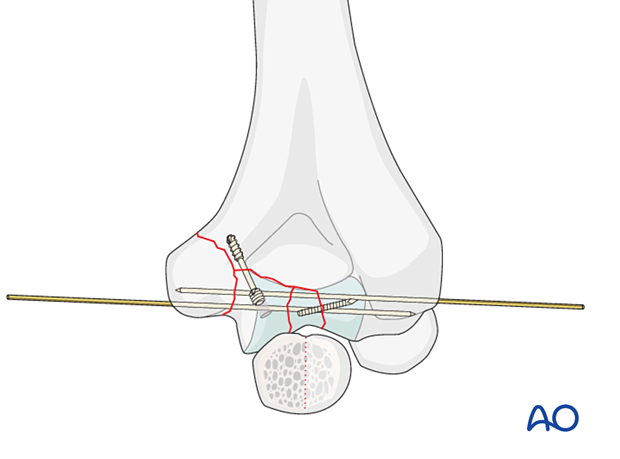
Headless screw fixation
PrincipleComplete the entire sequence of drilling and screw insertion for each screw before inserting the next screw.
Insert the guide wire.
Drill the pilot hole for the screw to the appropriate depth, using the cannulated drill bit placed over the guide wire.
Take care when removing the drill not to dislodge or remove the K-wire.
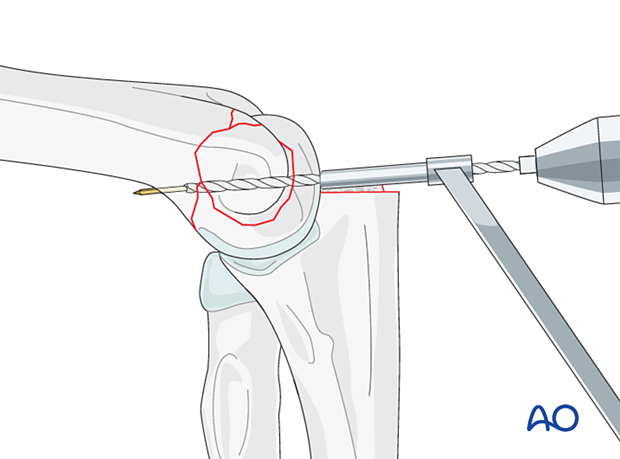
Insert the chosen screw over the wire, then remove the guide wire.
Insert the subsequent screws in the same way.
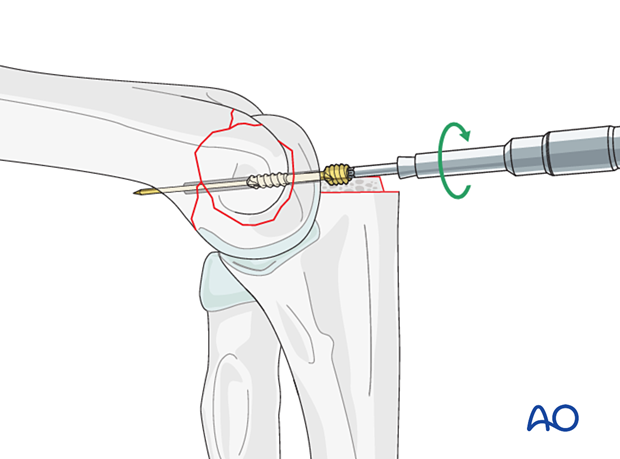
5. Fixation of medial condyle
Provisional fixation of medial epicondyle
Provisionally stabilize the medial condyle and epicondyle with a K-wire.
It is recommended to check the reduction and provisional fixation with image intensification.

Basic techniques
The basic technique for application of anatomical plates is described in:
If precontoured anatomical plates are not available, see the basic technique for application of reconstruction plates.
Medial plate application
Apply a medial plate in neutral or compression mode depending on the medial column fracture stability.

6. Alternative: bicolumnar fixation
Lateral or dorsolateral plate application
Apply a lateral or dorsolateral plate in neutral mode after medial stabilization.

Note: radial nerve at risk
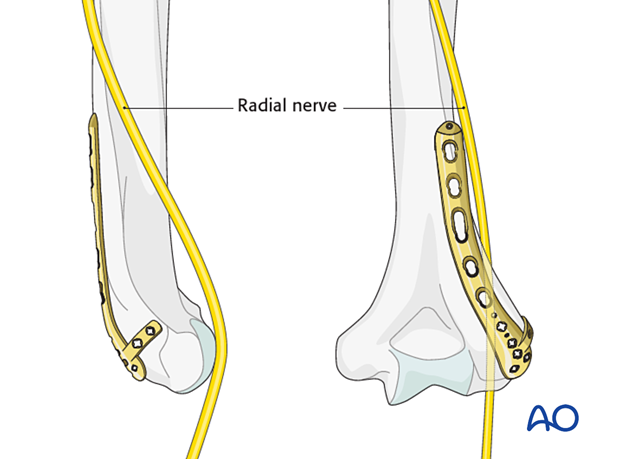
7. Final assessment
Visually inspect the fixation and manually check for fracture stability.
Repeat the manual check under image intensification.
Ensure the ulnar nerve is not unstable or tethered on implants throughout a full range of motion.
8. Aftercare
Introduction
The rehabilitation protocol consists usually of three phases:
- Rehabilitation until wound healing
- Rehabilitation until bone healing
- Functional rehabilitation after bone healing
Immediate aftercare
The arm is bandaged to support and protect the surgical wound.
The arm is rested on pillows in slight flexion of the elbow so that the hand is positioned above the level of the heart.
Short-term splinting may be applied for soft-tissue support.
Neurovascular observations are made frequently.
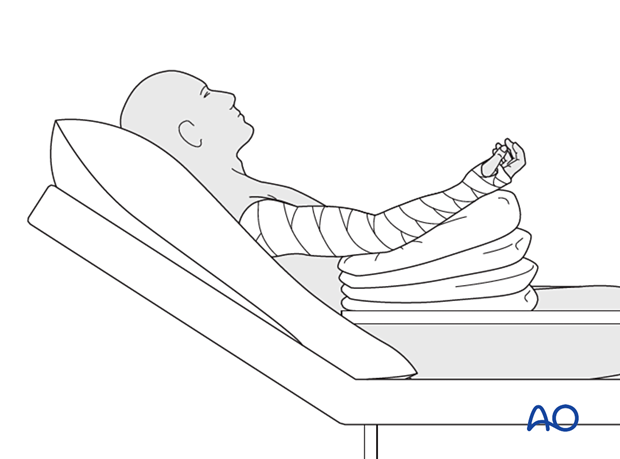
Hand pumping and forearm rotation exercises are started as soon as possible to reduce lymphedema and to improve venous return in the limb. This helps to reduce postoperative swelling.
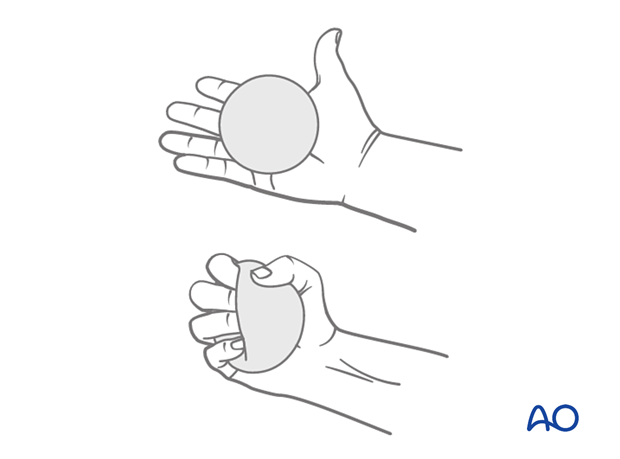
Mobilization until wound healing
Gravity-eliminated active assisted exercises of the elbow should be initiated as soon as possible, as the elbow is prone to stiffness:
- The bandages are removed, and the arm rested on a side table
- Flexion/extension of the arm at the elbow is encouraged in a gentle sweeping movement on the tabletop as far as comfort permits (as illustrated)
- Full pronation and supination in protected arm position is encouraged
- Exercises are performed hourly in repetitions, the number of which is governed by comfort
- Between periods of exercise, the elbow is rested in the elevated position for at least the first 48 hours postoperatively
- Keep the arm elevated between periods of exercise until the wound has healed
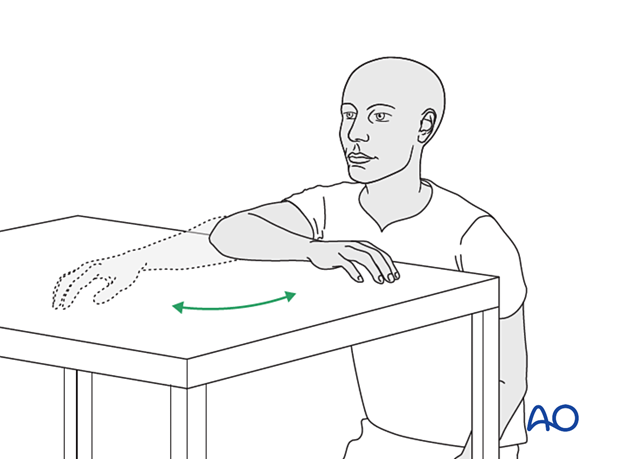
Rehabilitation until bone healing
Active patient-directed range-of -motion exercises should be encouraged without the routine use of splintage or immobilization.
Avoid forceful motion, repetitive loading, or weight-bearing through the arm.
A simple compressive sleeve can provide proprioceptive feedback which can help regain motion and avoid cocontraction.
No load-bearing (ie, pushing, pulling, or carrying weights) or strengthening exercises are allowed until early fracture healing is established by x-ray and clinical examination.
This is usually a minimum of 8–12 weeks after injury. Weight-bearing on the arm should be avoided until bony union is assured.
The patient should avoid resisted extension activities, especially after a triceps-elevating approach or olecranon osteotomy.
Rehabilitation after bone healing
When the fracture has united, a combination of active functional motion and kinetic chain rehabilitation can be initiated.
Active assisted elbow motion exercises are continued. The patient bends the elbow as much as possible using his/her muscles while simultaneously using the opposite arm to gently push the arm into further flexion. This effort should be sustained for several minutes; the longer, the better.
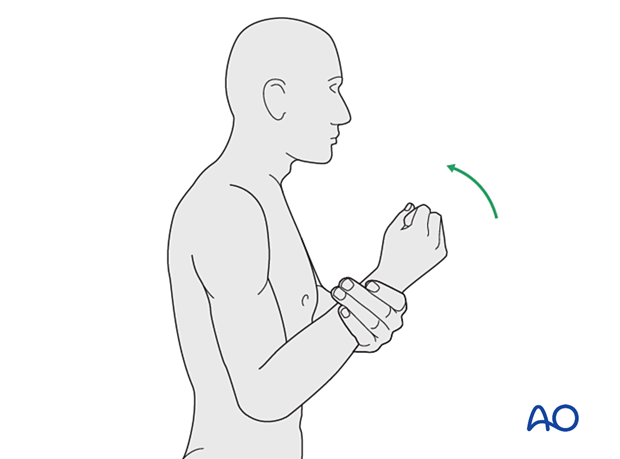
Next, a similar exercise is performed for extension.

If the patient finds it difficult to accomplish these exercises when seated, then performing the same exercises when lying supine can be helpful.
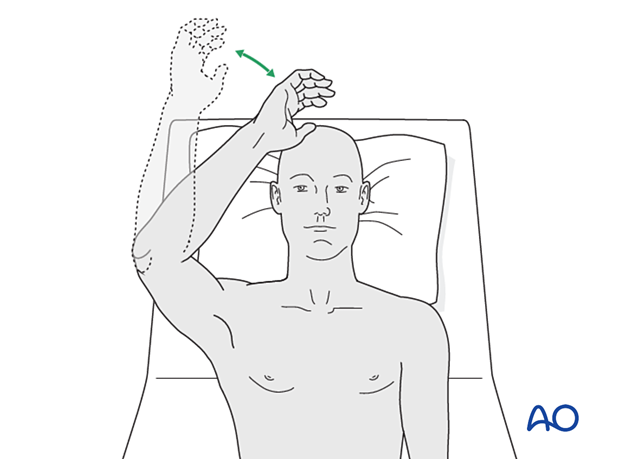
Implant removal
Generally, the implants are not removed. If symptomatic, hardware removal may be considered after consolidated bony healing, usually no less than 6 months for metaphyseal fractures and 12 months when the diaphysis is involved. The avoidance of the risk of refracture requires activity limitation for some months after implant removal.
